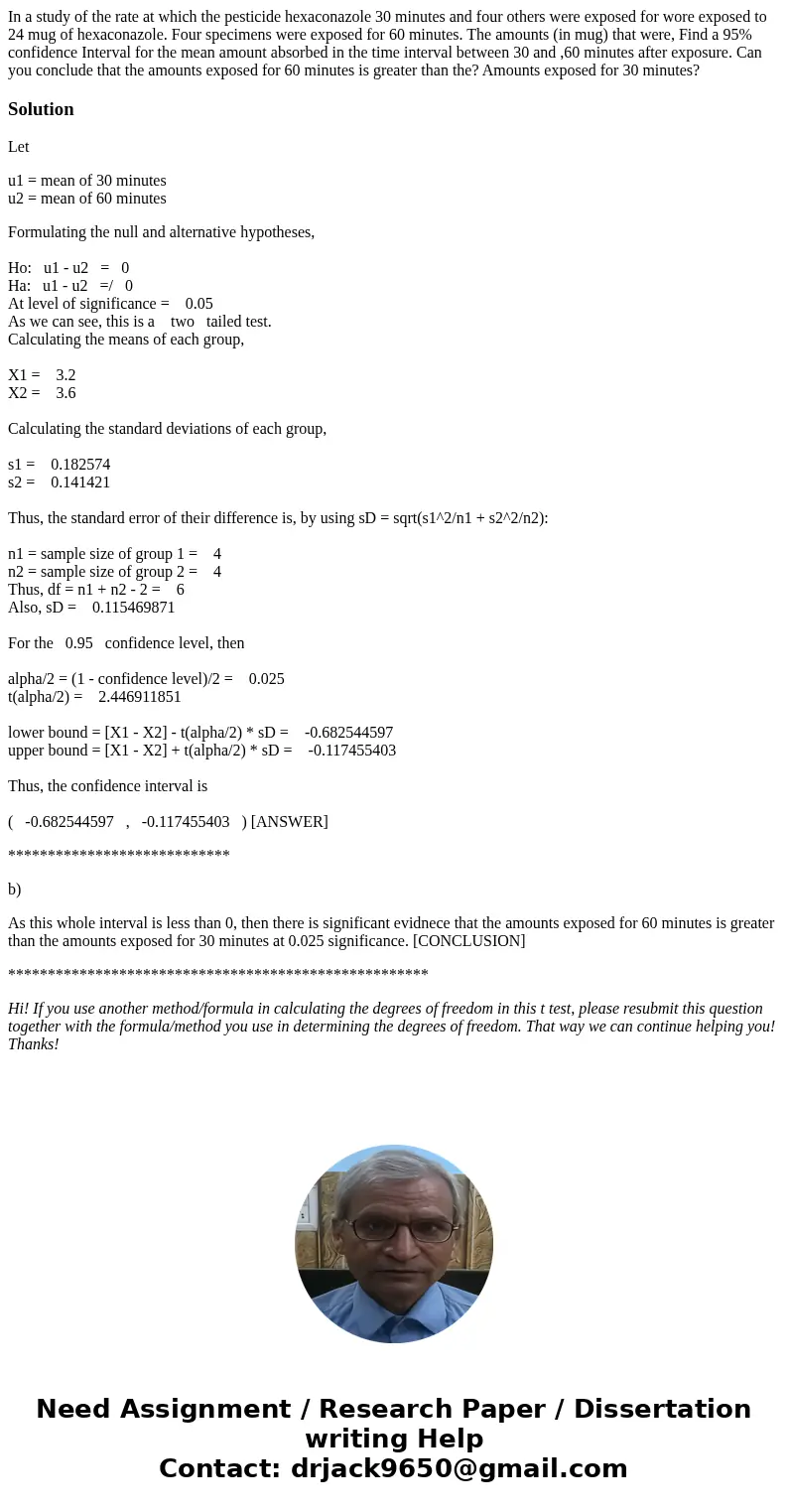In a study of the rate at which the pesticide hexaconazole 3
Solution
Let
u1 = mean of 30 minutes
u2 = mean of 60 minutes
Formulating the null and alternative hypotheses,
Ho: u1 - u2 = 0
Ha: u1 - u2 =/ 0
At level of significance = 0.05
As we can see, this is a two tailed test.
Calculating the means of each group,
X1 = 3.2
X2 = 3.6
Calculating the standard deviations of each group,
s1 = 0.182574
s2 = 0.141421
Thus, the standard error of their difference is, by using sD = sqrt(s1^2/n1 + s2^2/n2):
n1 = sample size of group 1 = 4
n2 = sample size of group 2 = 4
Thus, df = n1 + n2 - 2 = 6
Also, sD = 0.115469871
For the 0.95 confidence level, then
alpha/2 = (1 - confidence level)/2 = 0.025
t(alpha/2) = 2.446911851
lower bound = [X1 - X2] - t(alpha/2) * sD = -0.682544597
upper bound = [X1 - X2] + t(alpha/2) * sD = -0.117455403
Thus, the confidence interval is
( -0.682544597 , -0.117455403 ) [ANSWER]
****************************
b)
As this whole interval is less than 0, then there is significant evidnece that the amounts exposed for 60 minutes is greater than the amounts exposed for 30 minutes at 0.025 significance. [CONCLUSION]
*****************************************************
Hi! If you use another method/formula in calculating the degrees of freedom in this t test, please resubmit this question together with the formula/method you use in determining the degrees of freedom. That way we can continue helping you! Thanks!

 Homework Sourse
Homework Sourse